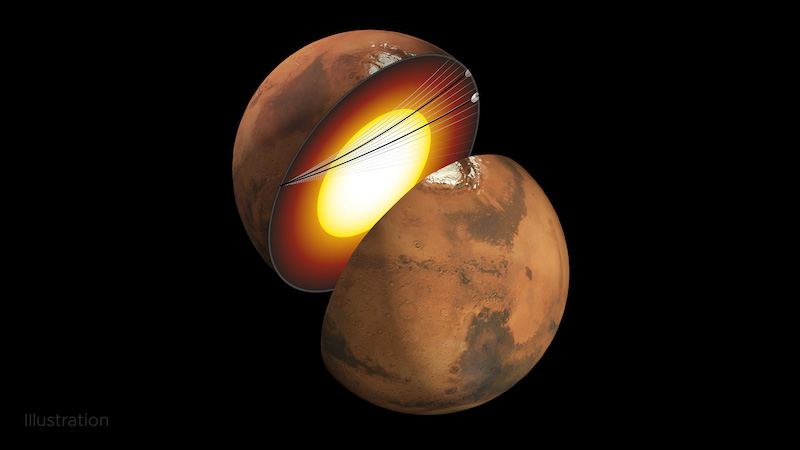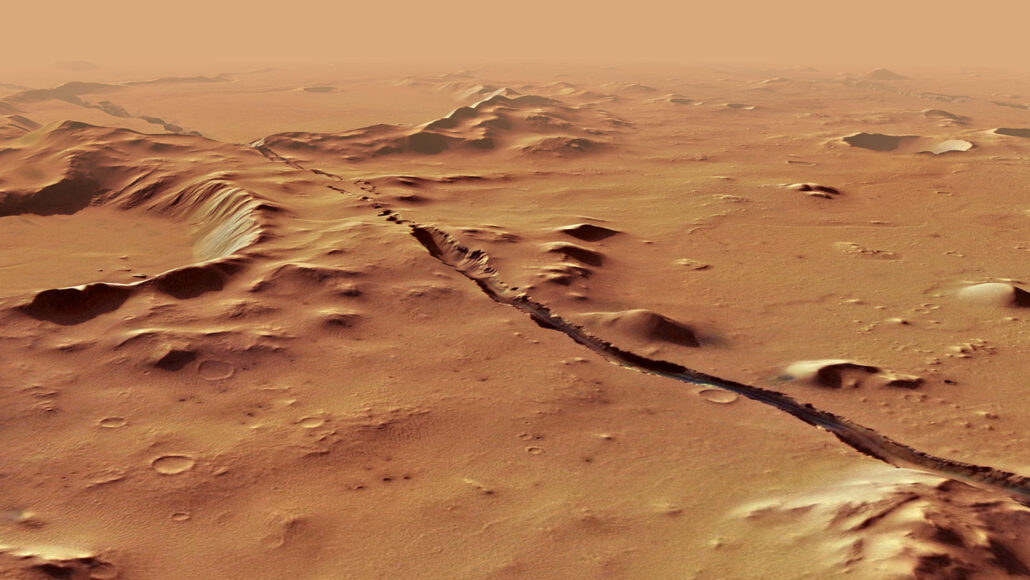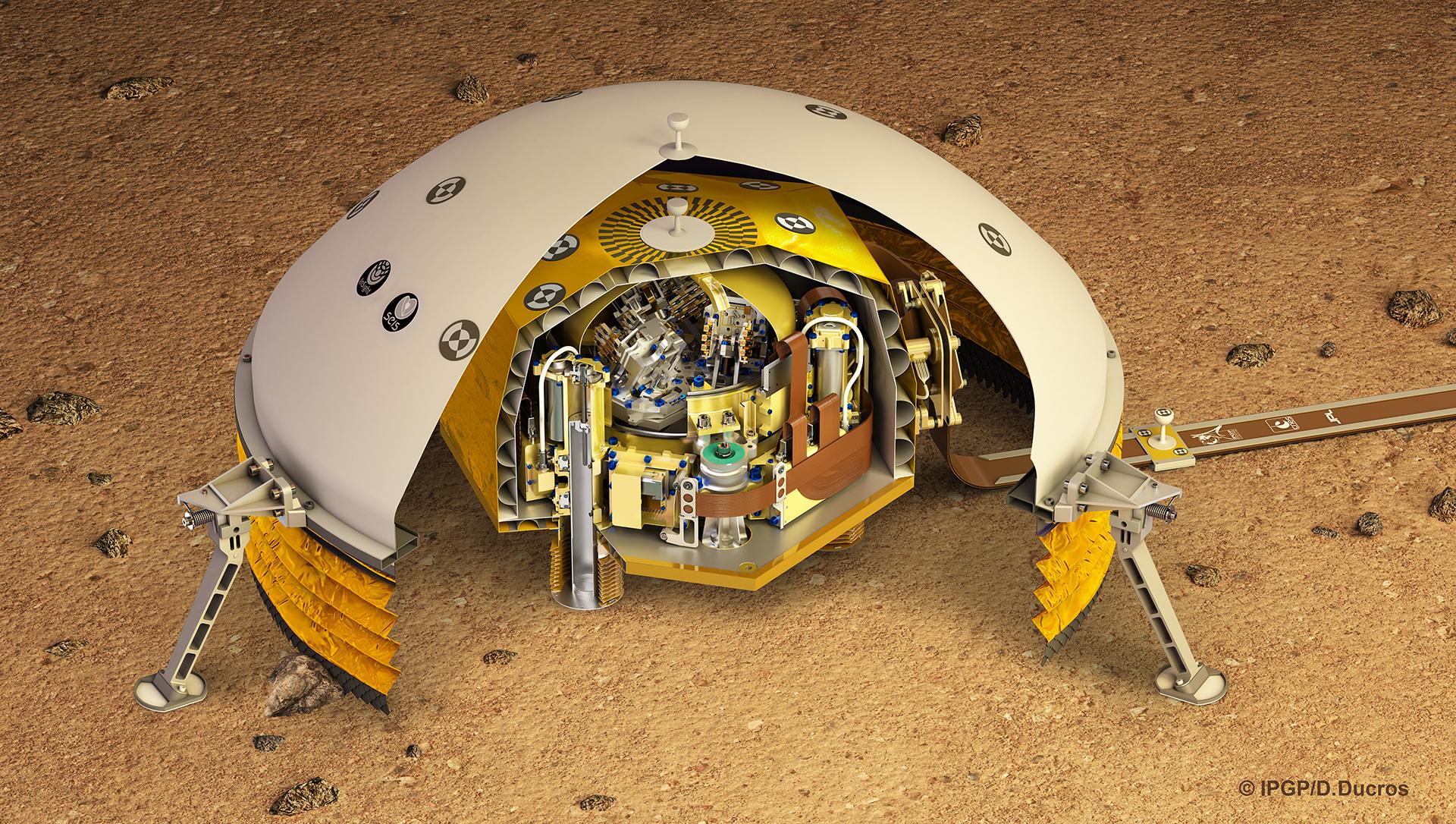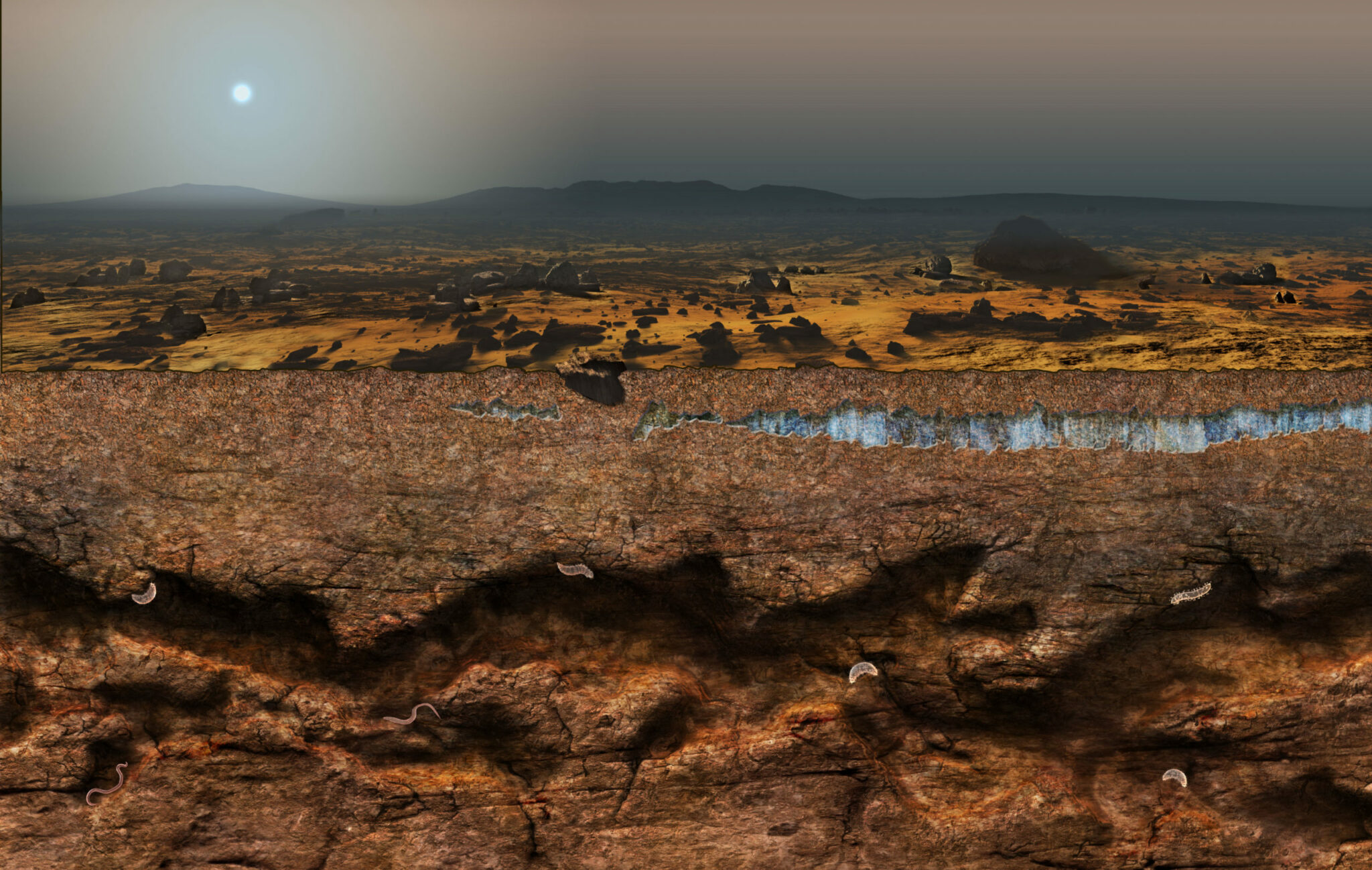
Analysis of seismic waves from earthquakes – and of Earth’s magnetic field – have revealed most of what we know about Earth’s core. But what about the core of the planet next door, Mars? On April 24, 2023, NASA announced it has obtained the clearest glimpse yet at Mars’ core. The data come from the InSight mission, which launched from Earth in 2018. An international group of researchers studied seismic waves from marsquakes traveling through the Red Planet’s core. The results indicate that Mars’ liquid-iron core is smaller and denser than scientists had thought.

The researchers published their peer-reviewed findings in Proceedings of the National Academies of Sciences on April 24, 2023.
2 marsquakes on the other side of the planet
The marsquakes themselves occurred back on August 25 and September 18, 2021. InSight detected them using its Mars Seismic Experiment for Interior Structure (SEIS) seismometer. InSight, which ended its mission in December 2022, had detected thousands of marsquakes, albeit tiny ones, since it landed in 2018.

Most of these were in the Elysium Planitia region where InSight landed. But these two marsquakes – called farside quakes – were much farther away from the lander. In fact, they were on the opposite side of the planet. This is significant, because the farther away they are, the deeper the seismic waves travel inside Mars. Indeed, these passed right through the core.

As lead author Jessica Irving at the University of Bristol in the U.K. said:
We needed both luck and skill to find, and then use, these quakes. Farside quakes are intrinsically harder to detect because a great deal of energy is lost or diverted away as seismic waves travel through the planet. It took a lot of seismological expertise from across the InSight team to tease the signals out from the complex seismograms recorded by the lander.
It was also fortunate that the two marsquakes were as large as they were. Bruce Banerdt, InSight’s principal investigator at NASA’s Jet Propulsion Laboratory, said:
These two farside quakes were among the larger ones heard by InSight. If they hadn’t been so big, we couldn’t have detected them.

New clues about Mars’ core
Previous marsquakes and the seismic waves they produced provided clues primarily about Mars’ mantle and crust. But now, scientists could analyze seismic waves that actually passed through the deep inner core. The results showed that Mars’ liquid-iron core is smaller and denser than scientists previously thought. They also revealed that about one-fifth of the core consists of elements such as sulfur, oxygen, carbon and hydrogen. Co-author Doyeon Kim of ETH Zurich said:
Determining the amount of these elements in a planetary core is important for understanding the conditions in our solar system when planets were forming and how these conditions affected the planets that formed.

The paper further explained:
Mars has a liquid iron alloy core at its center. Using seismic data gathered by the InSight mission, we have made the first observations of seismic waves traveling through Mars’ core. We use the travel times of core-transiting seismic waves, relative to ones which remain in the mantle, to constrain properties of the core and construct the first models of the elastic properties of the entire planet. Our results are consistent with a core rich in sulfur, with smaller fractions of oxygen, carbon and hydrogen.
These were the first seismic waves scientists detected passing directly through the Martian core. Scientists had detected previous waves in 2021 that instead reflected off the outer boundary of the core.

Largest marsquake ever
On May 4, 2022, InSight detected its largest marsquake ever at a record magnitude of 5.0. That may be a medium quake on Earth, but on Mars, scientists say it is near the upper limit in quake strength.
Sadly, the last time that InSight communicated with Earth was December 15, 2022. The lander’s solar-powered batteries eventually ran out of energy after too much dust covered the solar panels.
Bottom line: A new study of marsquake seismic data from NASA’s InSight lander shows that Mars’ core is smaller and denser than scientists previously thought.